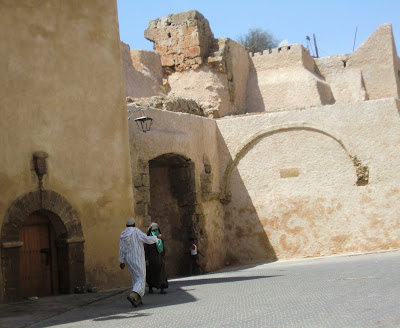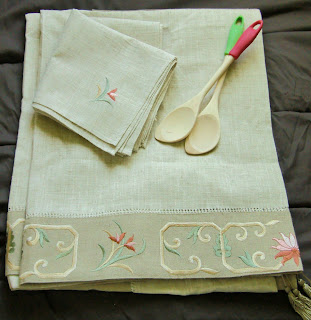We were lucky that no one got hurt when the bus fish-tailed and rocked forwards and backwards as passengers pushed to free it. Luckily we had a college football offensive lineman in our group – he sort of lifted the back of the bus which was of great help. We also had help from some local folks who cut some wood to act as traction.
We passed a woman roasting some cocoa beans:
We finally arrived at the park and were excited to start our rainy rainforest hike, but were held up by folks applying bug spray, donning rain gear, etc. The ranger then further delayed the hike by explaining some very basic things about the park and by informing us of the important fact that next year they should have a souvenir shop. That ate up about ½ hour of what was to be a 2+ hour hike. We proceeded at a snail’s pace all the while I was being bitten by Greg’s ant bastard friends. After about a half hour of plodding, we were so frustrated Greg and I turned back. We saw a nice millipede on our backtrack:
After a bit more walking I saw a frog or toad with great cammo!
We arrived back to where the bus was and poked around a bit before deciding that we should just walk down a road that led further into the park. That was when we were met by the group which was returning to the bus. So, the “hike” was about 45 minutes total and we couldn’t have covered even a half mile. The best part was the giant millipede that someone spotted emerging from under the bus.
I did spot a lizard from afar and saw two neat birds, but otherwise the hike was a bust. The bus ride and pushing was actually the highlight of the trip. Our trip out of the park was much like the trip in except that we walked a good bit of it so that the bus could more easily traverse the mud and it was raining in torrents. I have some video of it – one of the hardest rains I’ve ever seen.
We left the park without really hiking and proceeded to go to a resort for lunch. It was good, but not Ghanaian and it felt strange to drive through rural poor areas and have a fine lunch at a hotel. In any case, they did have a little sitatunga antelope as a mascot. She seemed to have a vision problem – her eyes were a little cloudy. She was cute all the same!
We arrived back at the ship 2+ hours ahead of time so I am not entirely sure why they cut our hike short. I know some thought we did a real hike, but many of us were disappointed. The saving grace of the day was the good attitudes and willingness to pitch in on the part of the SAS people. Thinking back it is interesting to note that none of the guides helped to push the bus out of the mud – it was a mixture of students, faculty and lifelong learners who did the job!
Ghana fun fact: Public peeing is very acceptable – if you need to pee and you are male, any man will help you find a good peeing spot. Even women can do it, but it is harder to find a good place although another woman would help you find one. When the bus got stuck the first time, our driver got off the bus, whipped out the old trouser snake and peed about 6 feet from the bus. He kept saying we could all go in the bushes, but didn’t consider that it was a bit harder for females. There were men walking all around in the bush and the biting ants made the proposition a daunting one.
































































